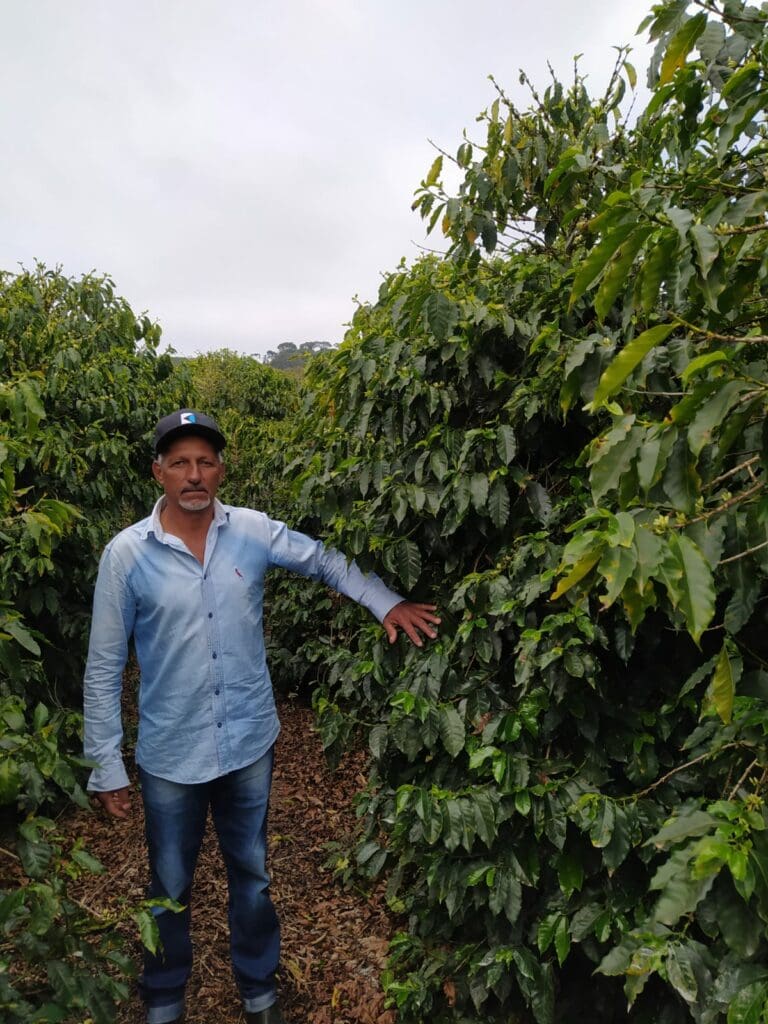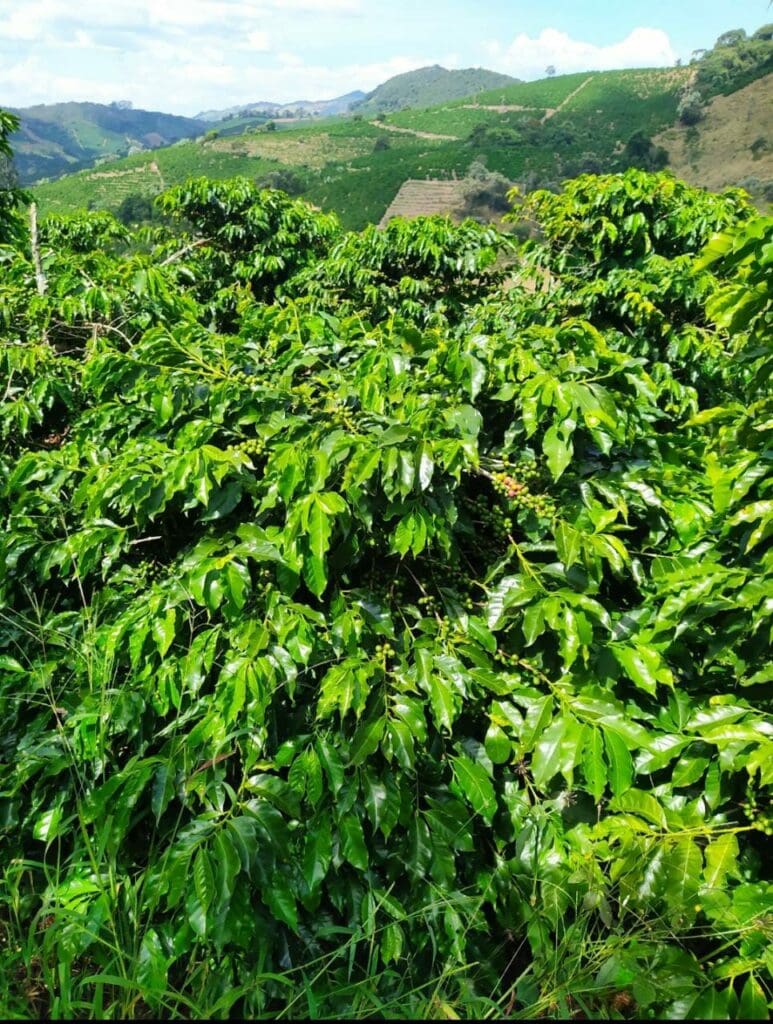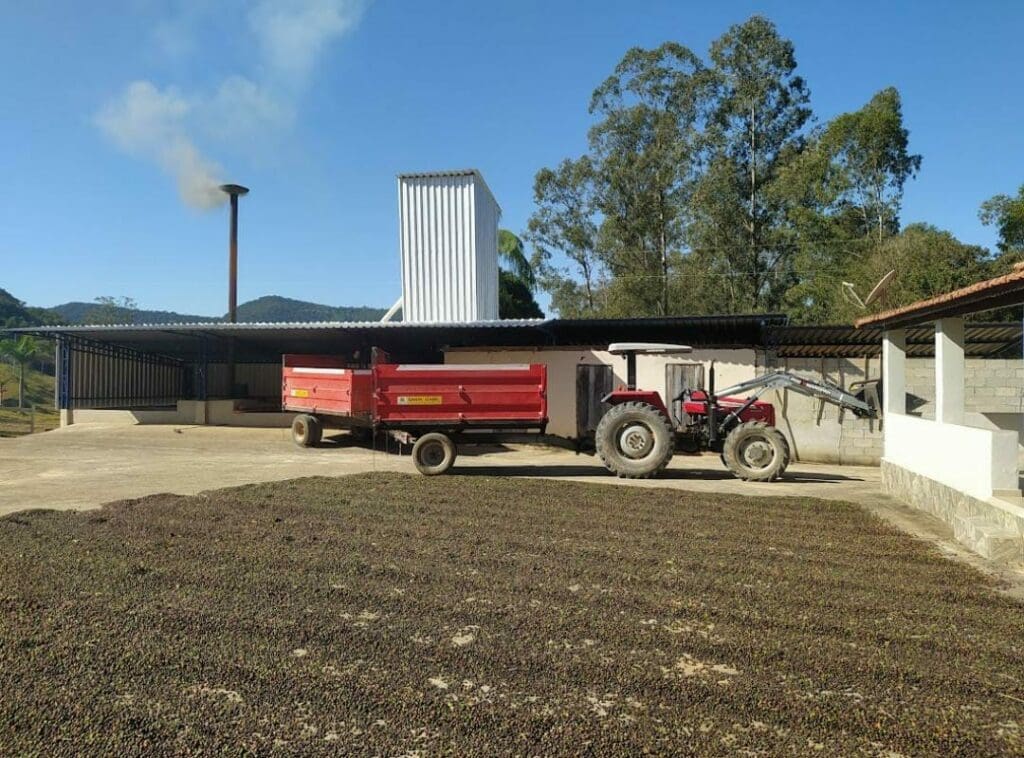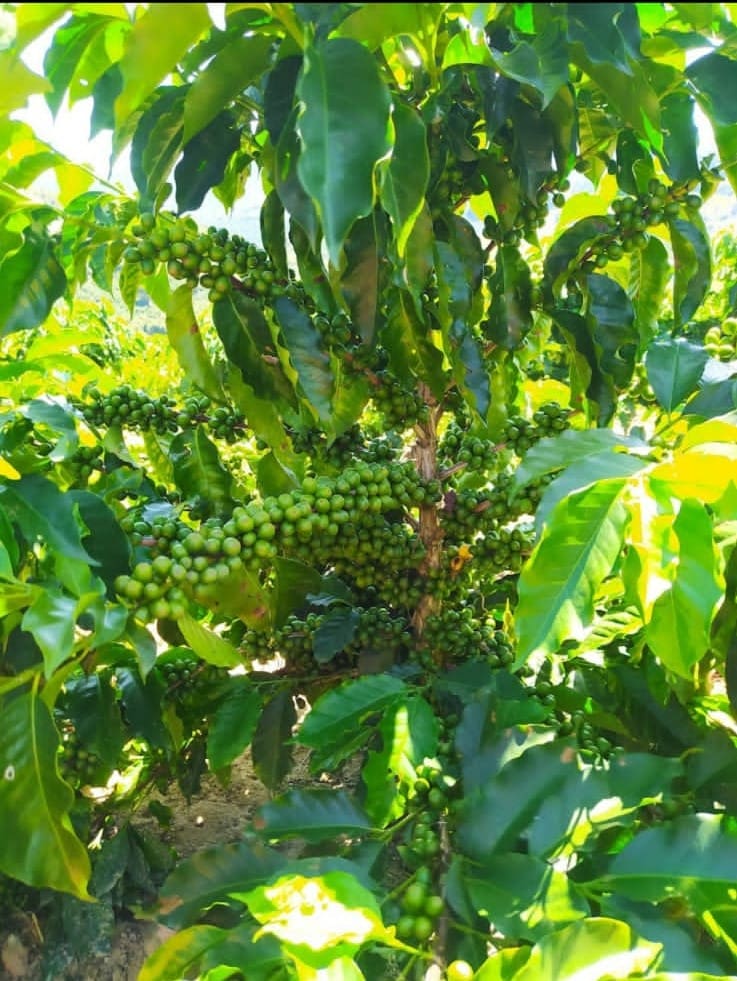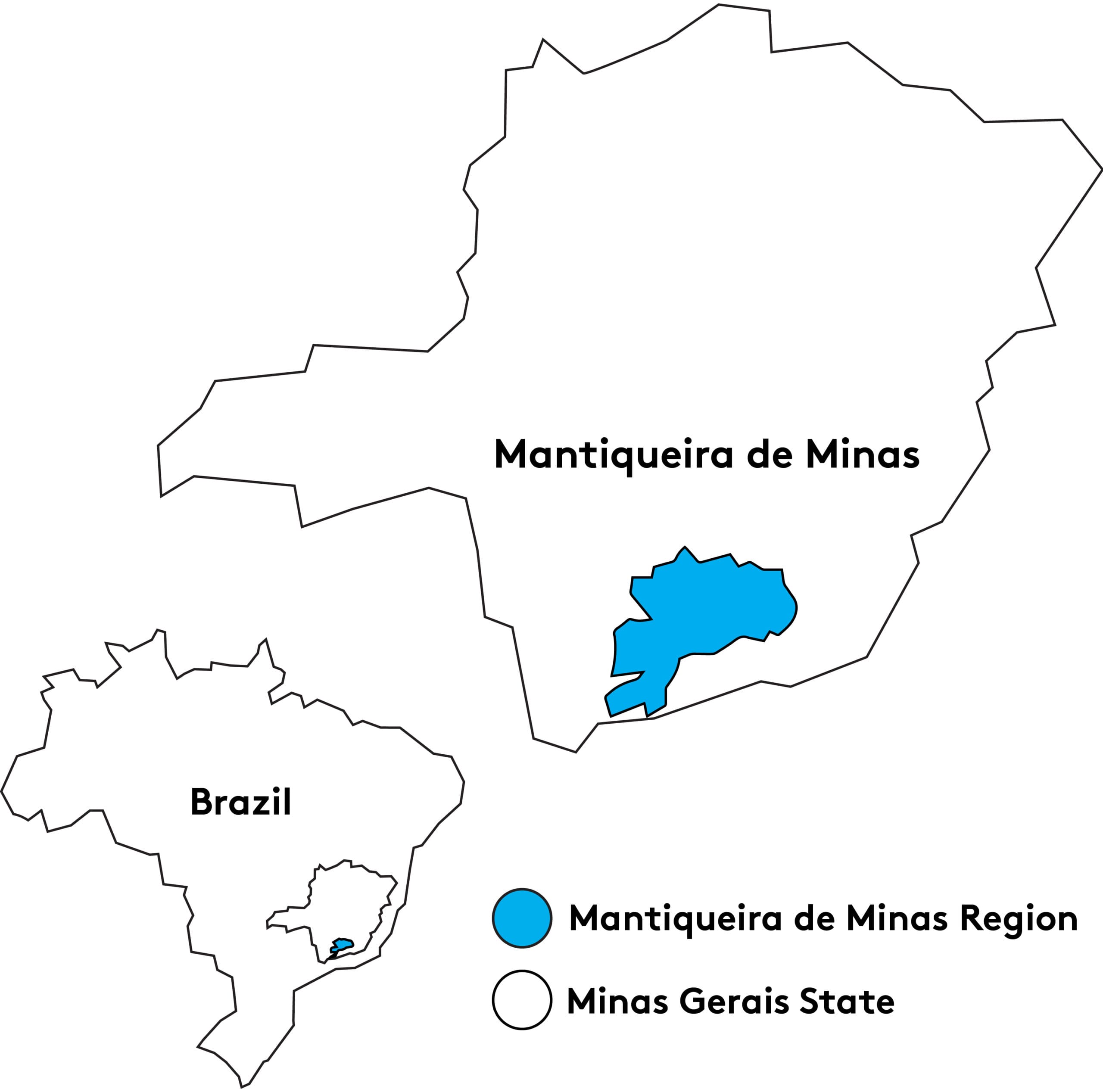Júlio Martins da Silva comes from a coffee producing family in the city of Lambari, Minas Gerais. He learned the trade from his father, Agenor Martins, who began his own career in the 1960s. Today, the whole family works in coffee, passing the legacy between generations and earning their entire income through their coffee crops.
Júlio’s Sítio São Domingos stretches across 30 hectares of land and is planted with 8 hectares of coffee. The family’s techniques for cultivation in this mountainous area are semi-mechanized, utilizing pickers and brush cutters. Newly planted coffee trees are fully maintained manually until adulthood to ensure that they grow into healthy, productive adult plants. Along with their commitment to quality, the family also prioritizes sustainable production practices in order to preserve the nearby springs and native forest land.
This lot of Red Catuai coffee underwent Natural processing. Catuai was developed by the Instituto Agronomico (IAC) of Sao Paulo State in Campinas, Brazil by crossing Mundo Novo and Caturra varieties. Catuai coffees are cultivated widely across Brazil, and are known for their high productivity potential.

